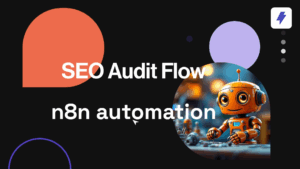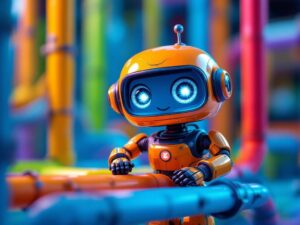
In a tech-driven world, the integration of AI tools for teachers into education is transforming teaching methods. As teachers strive for more effective engagement, AI provides a crucial catalyst for success. With its capacity to analyze data and offer personalized insights, AI allows educators to tailor their approaches, creating a more efficient and personalized learning experience. This integration not only streamlines administrative tasks but also fosters a dynamic and adaptive educational environment, catering to the diverse needs of today’s students.
Table of Contents
Toggle1. Revolutionizing Lesson Planning with AI Magic
AI-powered tools redefine traditional lesson planning, offering educators unparalleled flexibility. No more one-size-fits-all; these tools empower teachers to tailor methods to each student’s unique needs. Leveraging AI, educators create personalized learning paths, catering to diverse styles and paces, ensuring a profound understanding and motivating active participation. Adaptive assessments, a key feature, enable real-time adjustments based on performance, providing instant feedback for quick interventions. This transformative approach enhances the educational experience and equips teachers for a more responsive, student-centric classroom.
AI tools not only revolutionize individual lesson plans but transform the entire teaching process, creating dynamic, interactive classrooms. Streamlining administrative tasks frees educators to focus on meaningful interactions. With routine tasks automated, teachers channel energy into fostering creativity, critical thinking, and communication skills. The result is a classroom where students actively participate, collaborate, and engage with the material. The dynamic synergy between educators and AI ensures fluid, evolving teaching responsive to changing classroom needs. In this era of educational innovation, AI emerges as a powerful ally, augmenting educators’ capabilities and enriching the educational experience for all.
2. Smart Grading: Redefining Assessment Dynamics
Say farewell to tedious grading, thanks to AI tools ushering in an era of efficiency. Smart grading, a revolutionary AI-powered feature, transforms how assessments unfold. It automates grading, bidding adieu to manual evaluation, and provides instant, detailed feedback on student work—highlighting correct answers and pinpointing areas for improvement. This not only frees educators from monotonous grading but also ensures a swift, accurate assessment, allowing them more time for impactful teaching. Smart grading’s efficiency benefits both teachers and students, offering timely feedback and fostering a responsive learning loop.
AI-driven smart grading isn’t just a time-saver; it’s a catalyst for teaching improvement. With instant feedback, educators gain insights into their teaching methods’ strengths and weaknesses. Real-time performance data enables agile adjustments in lesson plans, ensuring tailored strategies for specific learning needs. This dynamic feedback loop creates a teaching environment focused on adaptability and refinement, empowering educators to stay ahead of evolving student needs. In essence, smart grading through AI tools elevates the teaching experience, making it more responsive and student-centric.
3. Virtual Classrooms: Breaking Down Geographical Barriers
AI-powered virtual classrooms break down geographical barriers, unlocking a world of possibilities for global education. These innovative platforms enable teachers to seamlessly connect with students from diverse corners of the world, fostering a rich tapestry of cultural diversity within the virtual learning space. This global reach not only broadens students’ perspectives but also creates an environment where collaborative learning transcends borders.
In these AI-driven virtual classrooms, geographical limitations become a thing of the past. Educators leverage technology to bridge gaps and cultivate an inclusive space where students from various backgrounds come together for a shared learning experience. The result is a dynamic and interconnected educational landscape that not only promotes cultural understanding but also prepares students for a globally interconnected future.
4. Individualized Learning Journeys with Personalized Tutoring
Unlock AI’s potential for personalized learning paths. Adaptive tutoring systems, driven by AI, assess strengths and weaknesses meticulously. This analysis guides tailored lessons, ensuring content aligns seamlessly with unique learner needs. The result is an educational experience tuned for optimal comprehension and retention, a personalized journey maximizing learning effectiveness.
AI-driven adaptive tutoring surpasses one-size-fits-all. It adapts intricately to each student’s style and pace, fostering an environment where understanding goes beyond achievement—it’s internalized. By pinpointing areas needing reinforcement and customizing content delivery, these systems craft a learning journey resonating individually. This personalized approach enhances academic outcomes, instilling confidence and mastery in the studied subjects.
5. Enhanced Student Engagement through Gamification
Bid farewell to the mundane routine of the traditional classroom setting with the infusion of AI-powered gamification tools. These innovative additions inject an element of fun and interactivity into the learning process, creating an engaging environment that captivates students’ attention. Through the strategic incorporation of points, rewards, and challenges, education transforms into a dynamic journey of exploration, turning each lesson into an exciting adventure of discovery.
AI-infused gamification not only breaks the monotony but also serves as a powerful motivator for students. The incorporation of game-like elements taps into the innate sense of competition and achievement, encouraging active participation and sustained interest in the learning material. As students earn points, unlock rewards, and tackle challenges, the educational experience becomes a thrilling quest where knowledge is gained not just for the sake of it but as part of an exciting and rewarding journey. This shift in approach not only boosts student engagement but also cultivates a positive attitude towards learning that extends beyond the classroom.
6. AI-Powered Content Creation: A Teacher’s Best Ally
Unlock boundless creativity through AI-generated content, revolutionizing the way teachers craft educational materials. With the power of AI at their fingertips, educators can effortlessly generate engaging and captivating resources that transcend traditional boundaries. From dynamic presentations to interactive learning modules, AI tools provide a palette for educators to enhance the overall learning experience. This not only sparks creativity but also elevates the quality of educational content, making lessons more compelling and enjoyable for students.
Moreover, the integration of AI in content creation isn’t just about innovation; it’s a strategic move to optimize the use of teachers’ time. By automating the process of material generation, AI tools liberate educators from the time-consuming task of manual content creation. This newfound efficiency allows teachers to redirect their focus towards fostering more profound and meaningful interactions with their students. With AI handling the heavy lifting of content creation, educators can devote their energies to personalized guidance, mentorship, and facilitating discussions, ultimately enriching the educational journey for every student.
7. Real-time Progress Tracking for Effective Intervention
Stay at the forefront of educational excellence with AI-driven progress tracking. This advanced technology provides educators with unparalleled insights into student performance, transcending traditional methods of assessment. Real-time data becomes a powerful ally, offering a dynamic snapshot of each student’s progress. From understanding strengths to identifying areas that need improvement, AI-driven progress tracking equips teachers with the tools to tailor their approach for optimal student outcomes.
The real value of AI-driven progress tracking lies in its ability to facilitate timely interventions. With instantaneous access to student performance metrics, educators can swiftly identify challenges that students may encounter. This enables teachers to implement targeted interventions, providing additional support where needed and reinforcing successful learning strategies. The result is a teaching environment that is not just responsive but proactive, ensuring that every student receives the necessary guidance and resources to thrive academically. In the dynamic landscape of education, AI-driven progress tracking emerges as a game-changer, enhancing the effectiveness of teaching strategies and contributing to the overall success of students. This adaptability empowers educators to provide targeted support, fostering a more equitable educational environment. In essence, AI tools not only bridge gaps in inclusive education but also establish a foundation for a learning environment where every student can flourish, regardless of their unique learning preferences or challenges.
8. Cultivating Critical Thinking with AI-Powered Discussions
Nurture critical thinking skills in students by incorporating AI-enhanced discussions into the educational landscape. These discussions are not just conversations; they are dynamic, thought-provoking exchanges powered by intelligent algorithms. The integration of AI introduces a new dimension to classroom dialogues, fostering an environment where students are prompted to delve into diverse perspectives and viewpoints. The algorithms, with their ability to analyze information from various angles, encourage students to explore nuanced aspects of a topic, thus cultivating a deeper understanding of the subject matter.
Intelligent algorithms play a pivotal role in shaping these discussions, providing a platform for students to hone their analytical reasoning skills. By guiding conversations towards multifaceted considerations, AI enhances the depth of critical thinking exercised by students. It prompts them to question assumptions, consider alternative viewpoints, and develop a more comprehensive approach to problem-solving. The result is a classroom dynamic where AI doesn’t replace human interaction but rather amplifies it, creating an environment where critical thinking becomes a cornerstone skill for students preparing to navigate the complexities of the real world.
9. Inclusive Education: Addressing Diverse Learning Styles
AI Tools for Teachers revolutionize inclusive education by seamlessly adapting to diverse learning styles. In personalized learning, AI acts as a facilitator with customizable interfaces catering to individual students’ unique needs. This adaptability addresses varied learning styles, ensuring each student engages with content in a way that resonates effectively. AI’s customizable interfaces create an inclusive environment celebrating the diversity of learning styles, accommodating visual learners and those thriving on auditory cues.
Adaptive technologies in AI tools contribute significantly to equalizing the education landscape. By dynamically adjusting content delivery based on individual progress, these technologies ensure every student, regardless of their learning pace, gets an optimal educational experience. This adaptability not only addresses the diverse needs of students but also fosters an inclusive environment. This adaptability empowers educators to offer targeted support, fostering a more equitable educational environment. In essence, AI tools not only bridge gaps in inclusive education but also establish a foundation for a learning environment where every student can flourish, regardless of their unique learning preferences or challenges. Moreover, this adaptability ensures a comprehensive approach to addressing diverse student needs.
10. Future-Proofing Education with AI Professional Development
Prepare educators for the evolving education landscape with AI Tools for Teachers-driven professional development programs. These initiatives use artificial intelligence to equip educators with a comprehensive toolkit, keeping them abreast of pedagogical trends and technological advancements. AI Tools for Teachers ensure continuous skill enhancement with personalized modules and real-time updates, adapting to ever-changing educational needs. These programs proactively address professional development and cultivate a community of educators ready to navigate future challenges. They foster collaboration, ensuring educators can share insights and strategies, creating collective readiness for the evolving educational landscape.
Staying current on pedagogical trends and technological advancements is vital for the ongoing evolution of teaching methodologies. AI-driven professional development enables educators to adopt emerging teaching techniques and integrate cutting-edge technologies into classrooms. By facilitating continual learning and skill development, these programs empower educators to establish dynamic, engaging learning environments aligned with evolving student needs. AI-driven professional development stands as a cornerstone in preparing educators for the future, where innovation and adaptability are integral to successful teaching strategies.
Conclusion for Top AI Tools for Teachers
The integration of AI Tools for Teachers in education marks a transformative shift. From revolutionizing lesson planning to breaking down geographical barriers and fostering individualized learning, AI proves to be a game-changer. Its impact is evident in dynamic classrooms, gamified learning experiences, and adaptive progress tracking. AI’s role in content creation frees up educators’ time while ensuring engaging materials. Inclusive and responsive, AI in education prepares students for a globally interconnected future. As educators embrace AI-driven professional development, they stay at the forefront of innovation, creating a community ready for the evolving educational landscape.


